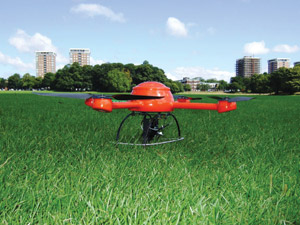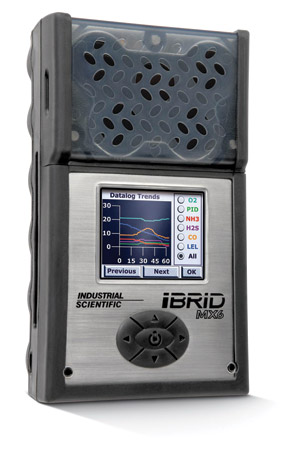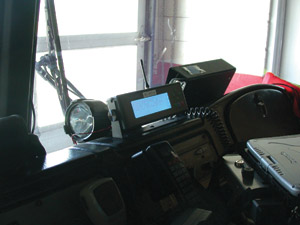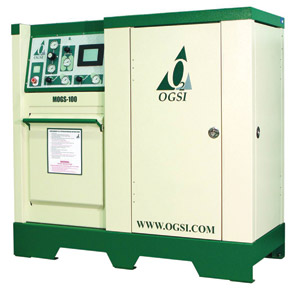
Equipment
New products
Gadgets Galore
Everyone knows that when you buy a computer it’s practically obsolete by the time you plug it in at home. Fire-related technology is no different – it’s constantly evolving, especially in areas such as communication/dispatch and incident management.
September 17, 2008
By James Careless
Everyone knows that when you buy a computer it’s practically obsolete by the time you plug it in at home. Fire-related technology is no different – it’s constantly evolving, especially in areas such as communication/dispatch and incident management. Herewith, a primer on some new tools of the trade. Some are blue-sky items that most departments are never likely to see let alone afford, but it’s always fun to window shop. Others are more budget conscious and practical.
FIRE SURVEILLANCE AND MONITORING

The Microdone unmanned aerial vehicle can be used to spot fires. It is not yet certified in Canada but is available through Ottawa’s Prolity Corp.
|
To keep an eye on developing fire situations, the United Kingdom’s West Midlands Fire Services (WMFS) flies its own micro-unmanned aerial vehicle, specifically, a Microdrone, sold by Prolity Corp. (www.prolity.com ) of Ottawa. Equipped with four helicopter-style rotors – each at the end of a cross formation, with the Microdrone’s main fuselage/skids in the centre – this remotely controlled UAV is equipped with a video camera (visible light/infrared). It broadcasts what it sees back to the operator in real time. The German-made Microdrone also has an onboard GPS so it can relay its exact location back to base at any time. This is particularly helpful when the Microdrone is used to spot fires and to search for missing persons in remote areas.
“We are currently working with the federal government to get the Microdrone certified for use in Canada,” says Prolity CEO Michael Raz. “In the U.K., WMFS uses their Microdrone with an onboard video camera and a high resolution digital still camera for capturing detailed images at incident scenes.”
EFFECTIVE TRACKING OF ON-SCENE RESOURCES
Keeping track of on-scene resources is a major headache for incident commanders, especially at fast-developing mutual aid scenes when new equipment seems to be arriving all the time. To provide commanders with a real-time briefing of equipment deployment, SRI International www.sri.com has developed the Mobile Mesh Communications System. This approach begins with dual band (4.9 GHz and 5 GHz) radios installed in each truck, with each radio relaying its GPS-determined location and identity in real time. This data is then displayed on the incident commander’s laptop, letting him see at any given moment where everyone is on scene.
Redundancy note: The MMCS Mesh technology means that any Mesh radio within the system can communicate with any other Mesh radio in the system, rather than all of them having to go through one central gateway as conventional LMR radios do. As a result, the signals travel between radios by whatever path is most readily available. As well, should one radio in the network fail, the signals will simply go through all the rest.
GAS MONITORING EQUIPMENT
 Industrial Scientific Corporation’s MX6 iBrid multi-gas monitor – one of several new gas monitors on the market – can detect from one to six gases including oxygen. |
Industrial Scientific Corporation’s MX6 iBrid multi-gas monitor has been CSA approved for use in Class I, Group A, B, C and D hazardous locations, both in diffusion mode and with an integrated sampling pump. Equipped with a full-colour LCD display, the MX6 iBrid provides clear readings in low-light or bright-light conditions. It also supports onboard graphing and a menu-driven PEG (Portable Embedded GUI) operating system. This means that an MX6 user can work through various instrument functions using an intuitive menu and the MX6’s five-way navigation button.
The MX6 can detect from one to six gases including oxygen. Add a photo-ionization detector (PID), and this device will detect unknown toxic hazards or volatile organic compounds. Find out more at www.indsci.com.
REAL-TIME VAPOUR DISPERSION MODELlING, VIA THE WEB
When hazardous gases escape during an incident such as a train derailment, chemical spill or nuclear steam release, projecting their path is of vital importance. To make this process simple, Keigan Systems of London, Ont., has developed CLEER-Impact Plus. Available online at www.cleerimpact.com, this service lets you enter the type of incident and the wind direction. This program then displays the projected dispersion path using Google Maps.
CLEER-Impact Plus requires an annual subscription payment if you want to use its full customization tools. However, you can run a few pre-set scenarios for free at its website to get a better sense of this tool.
COMMUNICATIONS / DISPATCH ON A BUDGET
 WiPath’s WDT300 Mobile Data Terminal is rugged for use in first-responder vehicles and has ports for a GPS printer and bar-code reader. |
WiPath’s WDT3000 Mobile Data Terminal (www.wipath.com) costs about the same as a consumer laptop, yet it has been made more rugged for use in first-responder vehicles. Physically, the WDT3000 is mounted on a pedestal. It has a QWERTY keyboard in its lower half, and a 240 x 64 graphical sunlight readable display in its upper half. This means the WDT3000 works akin to an older DOS text-based computer, and has input ports for a GPS receiver, printer and bar code reader.
Meanwhile, WiPath’s PDT2000 Paging Data Terminal lets firefighters in the truck see incoming one-way pages from dispatch on a large LCD screen. Hard copies of the pages can be generated using an attached thermal printer, ensuring that there will be no misunderstandings in the field. You can find more about the WDT3000 and the PDT3000 at www.wipath.com.
EASY-TO-USE RADIO INTEROPERABILITY
Need an affordable way to get incompatible radio systems to talk to each other on-scene? Consider the ICRI (Incident Commanders’ Radio Interface) made by Communications-Applied Technology. Dollar for dollar, the ICRI is one of the most inexpensive, easy-to-use interoperability solutions you can buy.
For instance, for about $6,000, the basic ICRI will interconnect up to six different radios and telephones – just plug them into the ICRI box – and pass audio among them. ICRI models can also be purchased in cheaper two-input models that are often sufficient if your local fire department can’t talk to local police – or up to 10 inputs from varying radios, telephones and satellite phones. These units even come in a back-packable model, and there’s a version with a cable reel that can be used as a quick-setup repeater. More at www.c-at.com.
DUAL-USE FACEMASK AND EQUIPMENT TOTES
The National Institute of Occupational Health and Safety (NIOSH) has approved Scott Health & Safety’s AV-2000 facepiece for use either with a CBRN-approved air-purifying respirator (APR) or CBRN-approved SCBA equipment. This means that fire departments can use the AV-2000 both as a gas mask or respirator mask, and change from one application to another without using tools. This dual use will allow departments to keep fewer facemasks in stock and on trucks and reduce the cost of future replacements for APR/SCBA tasks. More at www.scotthealthsafety.com.
For those times you have to haul SCBA tanks, Groves’s new SCBA and rescue bags can make this tough job easier and safer. The bags are fitted with hard plastic bases and rigid sidewalls to protect the air tanks, which are housed individually in their own compartments. These bags have two heavy duty handles and an over-the-shoulder strap for easier carrying, plus a reflective silver stripe for higher visibility. Groves’s SCBA bag holds two air tanks and the rescue bag hold three mini lifting bags, one SCBA cylinder, a controller and regulator and three 50-foot coils of hose. Details will be available shortly at www.readyrack.com.
BACKUP LMR COMMUNICATIONS VIA CELLPHONE
To provide backup communications on a budget – including reaching into areas outside the range of your primary radio network – consider equipping your department with Mike Direct Connect Push-to-Talk wireless handsets.
Offered by Telus, Mike Direct Connect handsets operate on a network separate from the one used by the company’s Telus Mobility subscribers. This provides first responders with priority access during high-traffic periods. Mike Direct Connect also allows users to create their own talk groups, and to operate across the entire Mike national network and into the U.S. by roaming to Sprint.
The rugged Mike i570 handset meets U.S. military specifications for resistance to dust, shock, vibration, high and low temperature, low pressure and solar radiation, and costs $99.99 on a three-year contract. More at www.telus.com.
MANUFACTURE YOUR OWN OXYGEN ON SITE

Medical Oxygen Generating System’s MOGS-50/100 can fill high-pressure cylinders up to 2200 psig and provide a direct oxygen flow at up to 80 psig. |
Finally, if your department has a requirement for medical oxygen on an ongoing basis, you may be able to save money by manufacturing it yourself, using an OGSI MOGS-50/100 Medical Oxygen Generating System. According to OGSI (short for Oxygen Generating Systems International), this MOGS-50/100 can fill high pressure cylinders up to 2200 psig and provide a direct oxygen flow at up to 80 psig. More data at www.ogsi.com.
Print this page